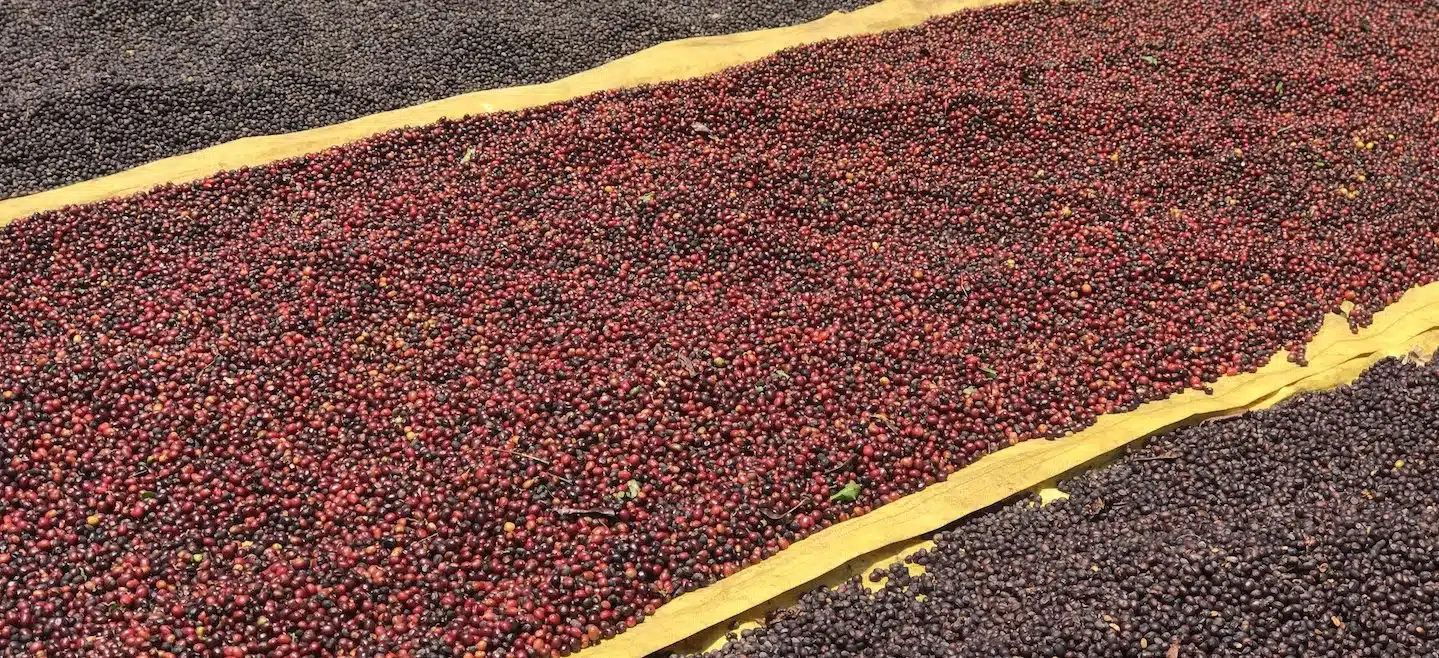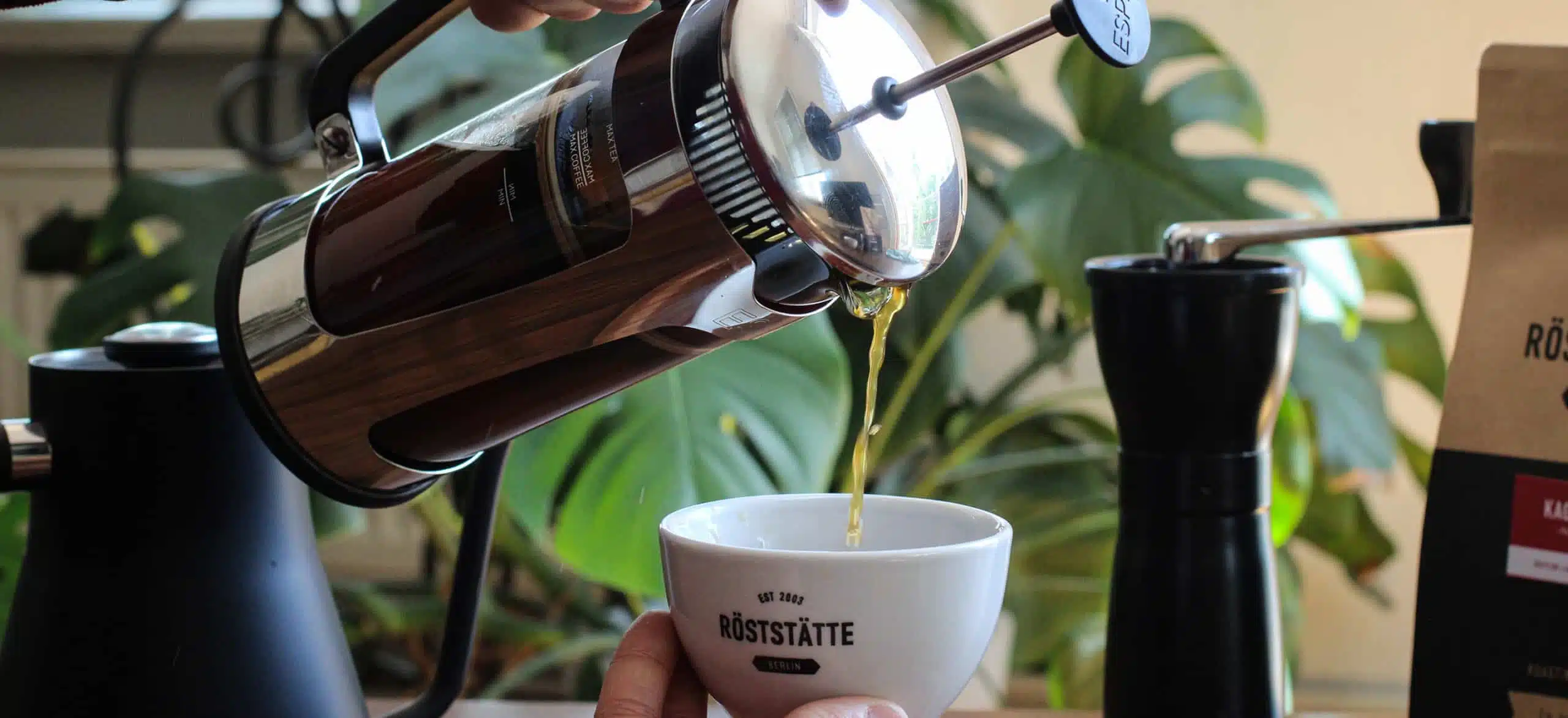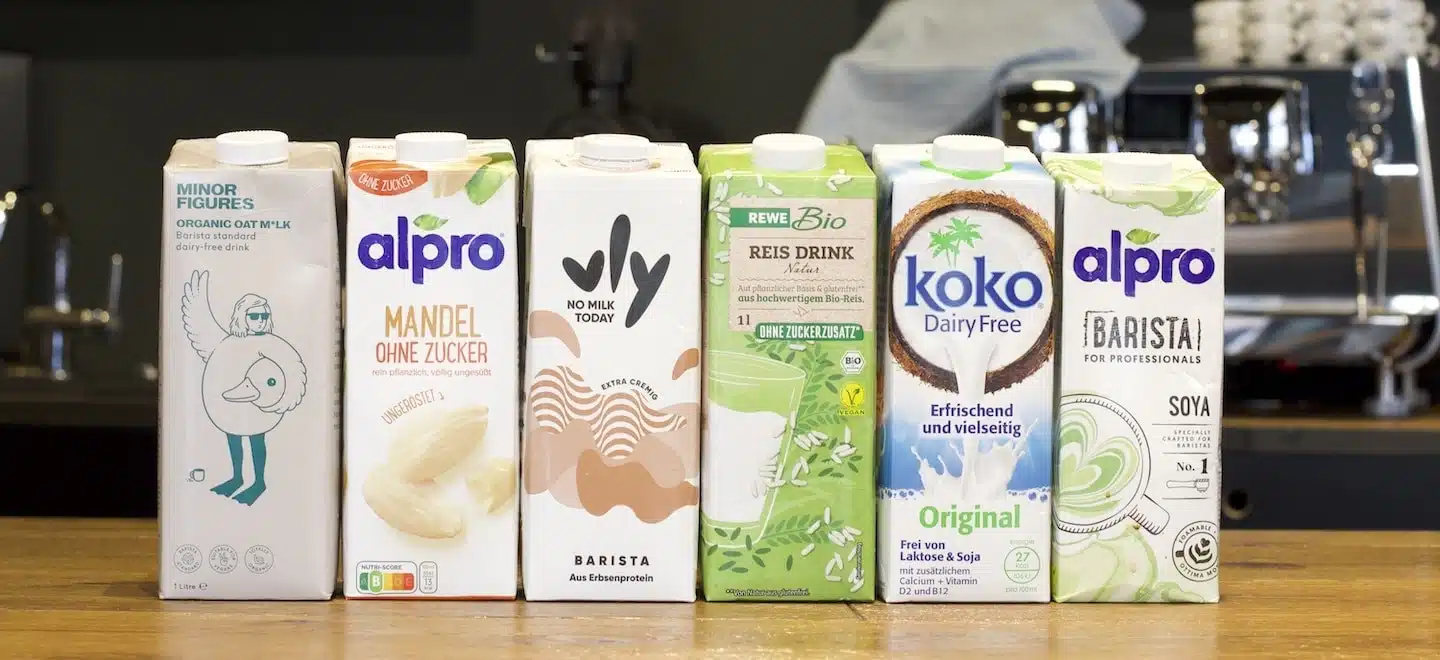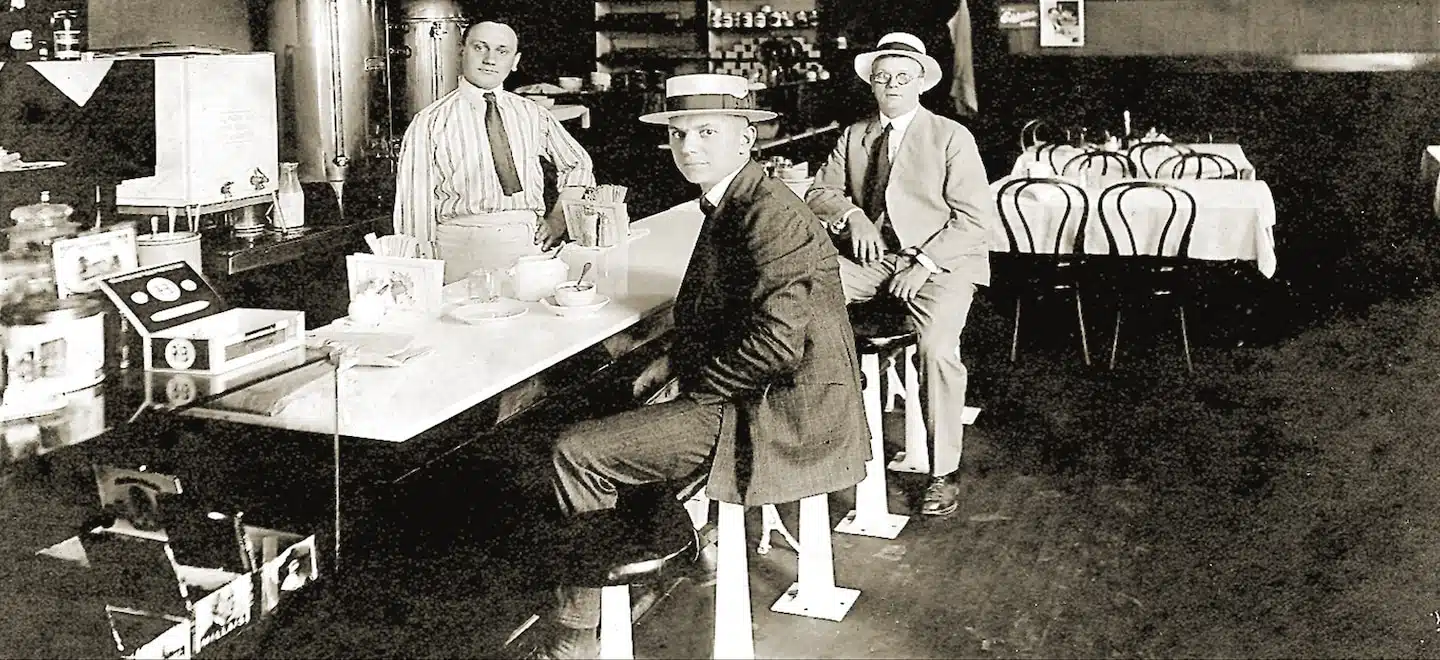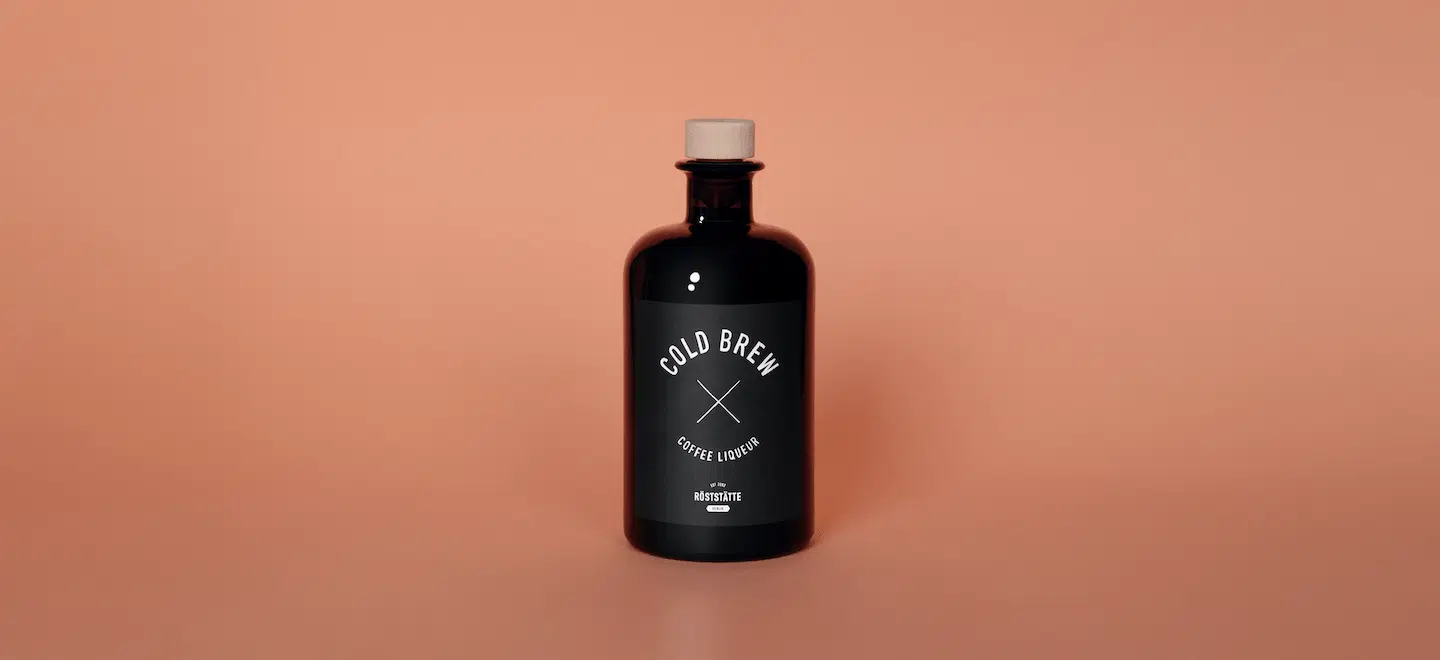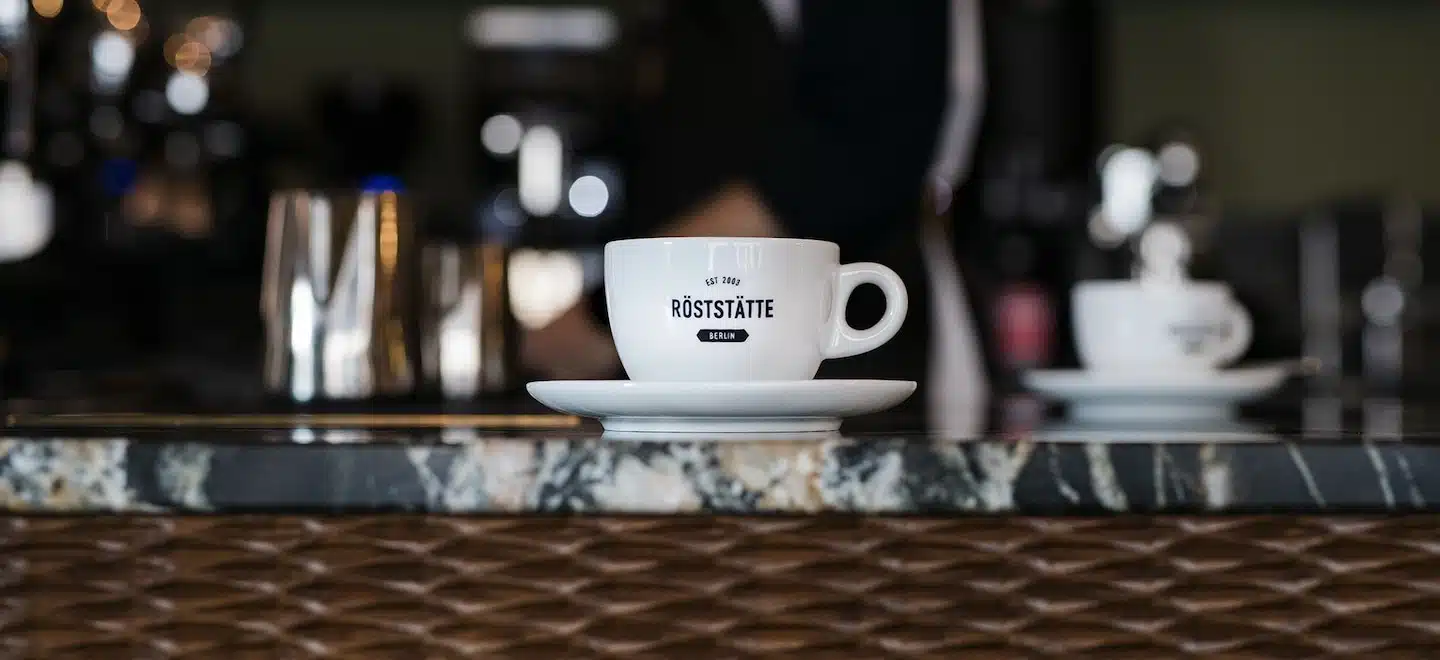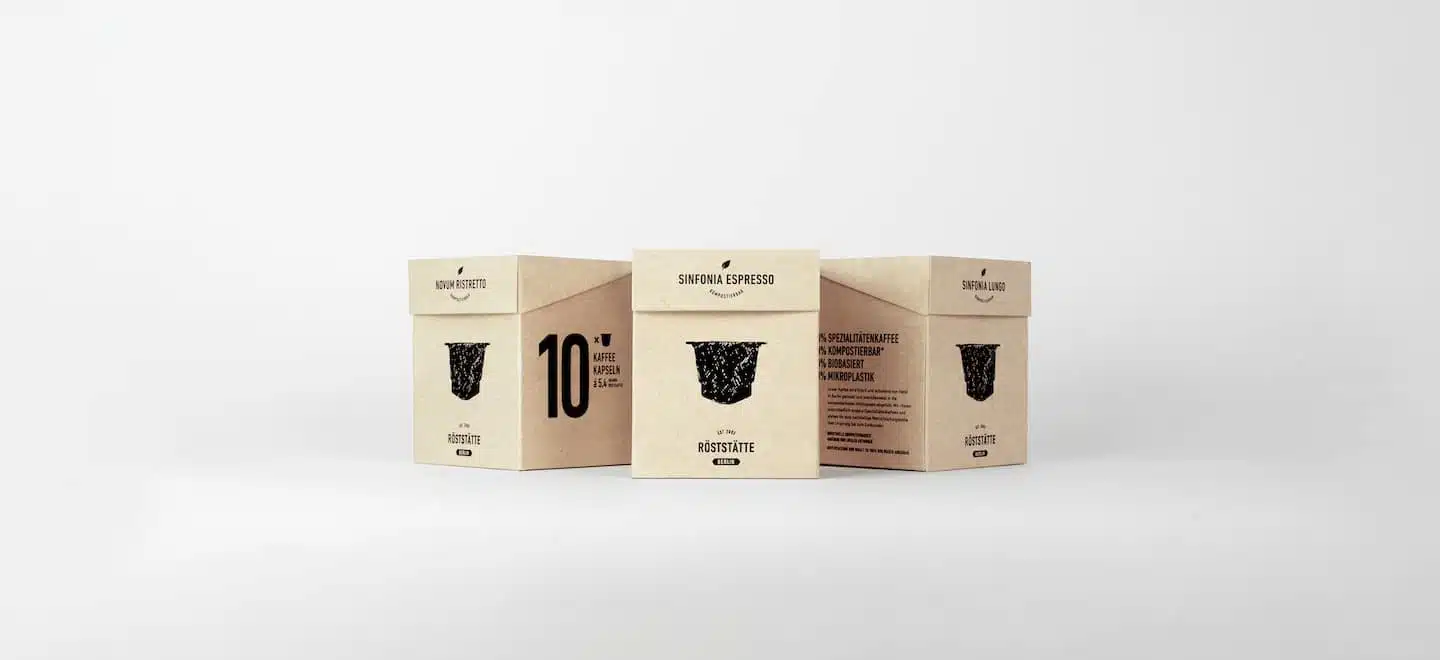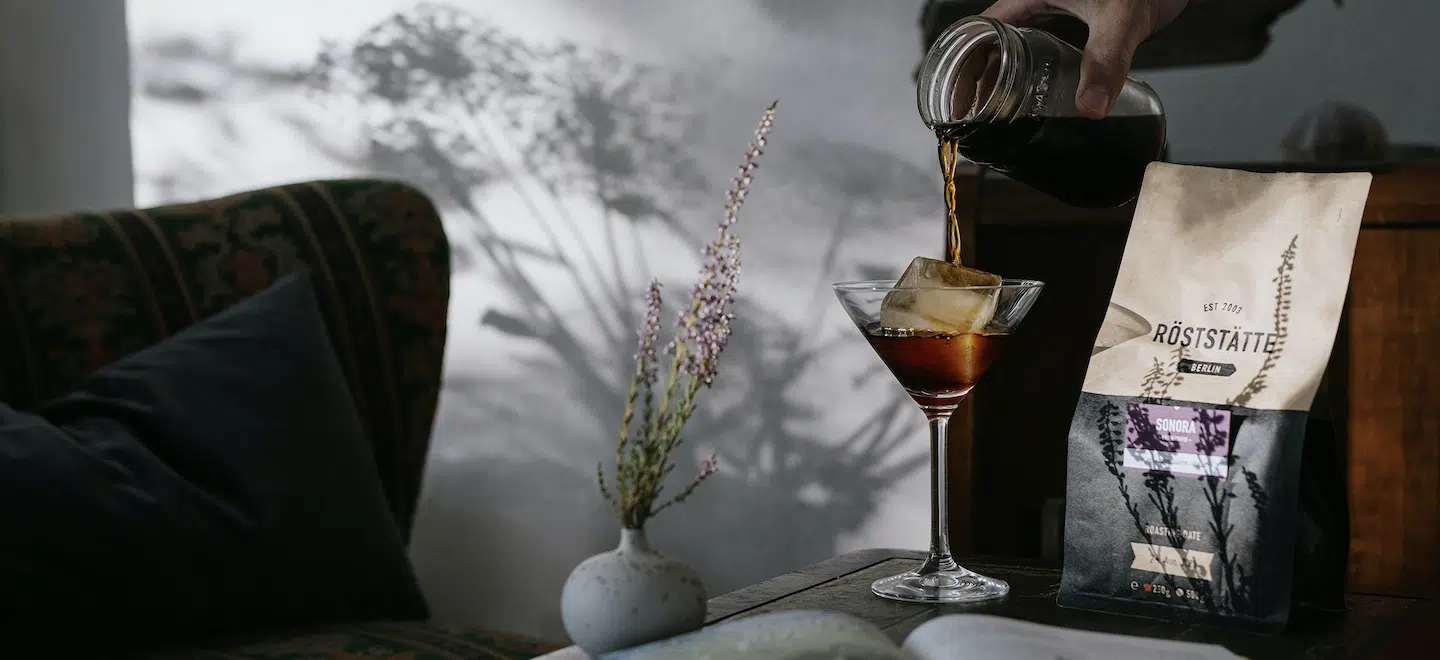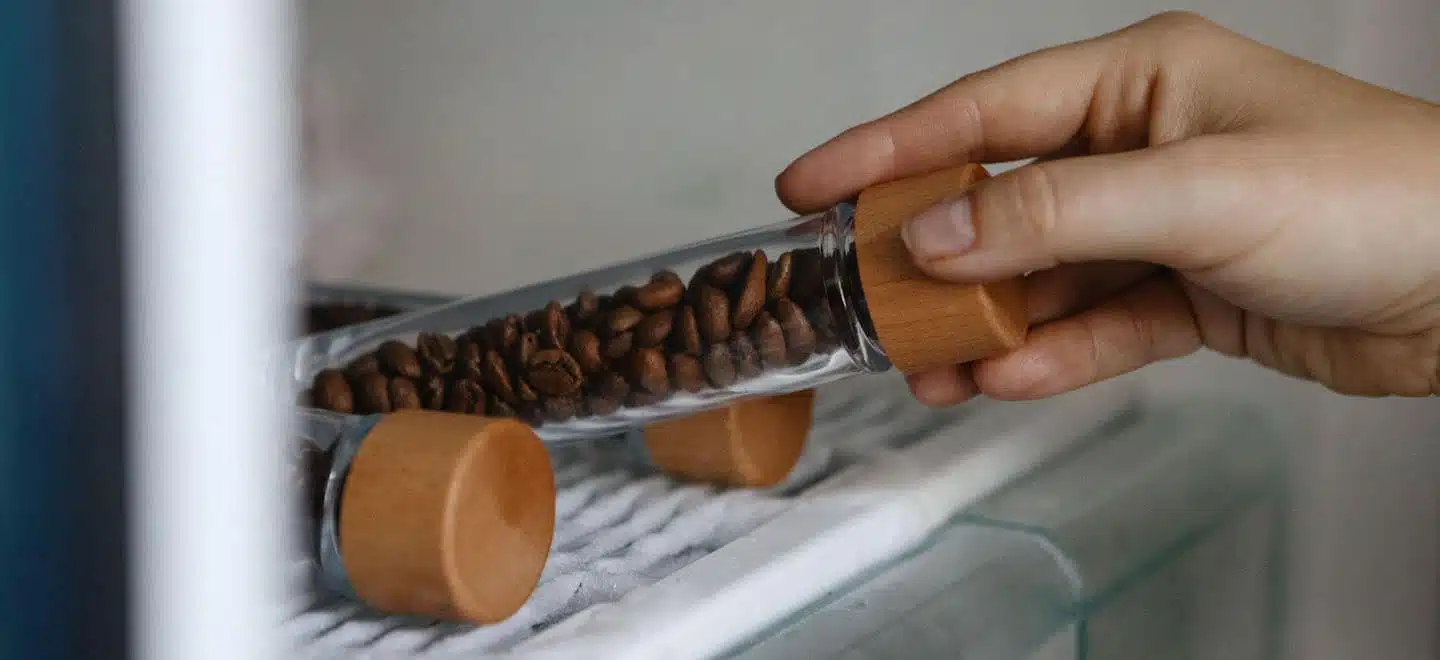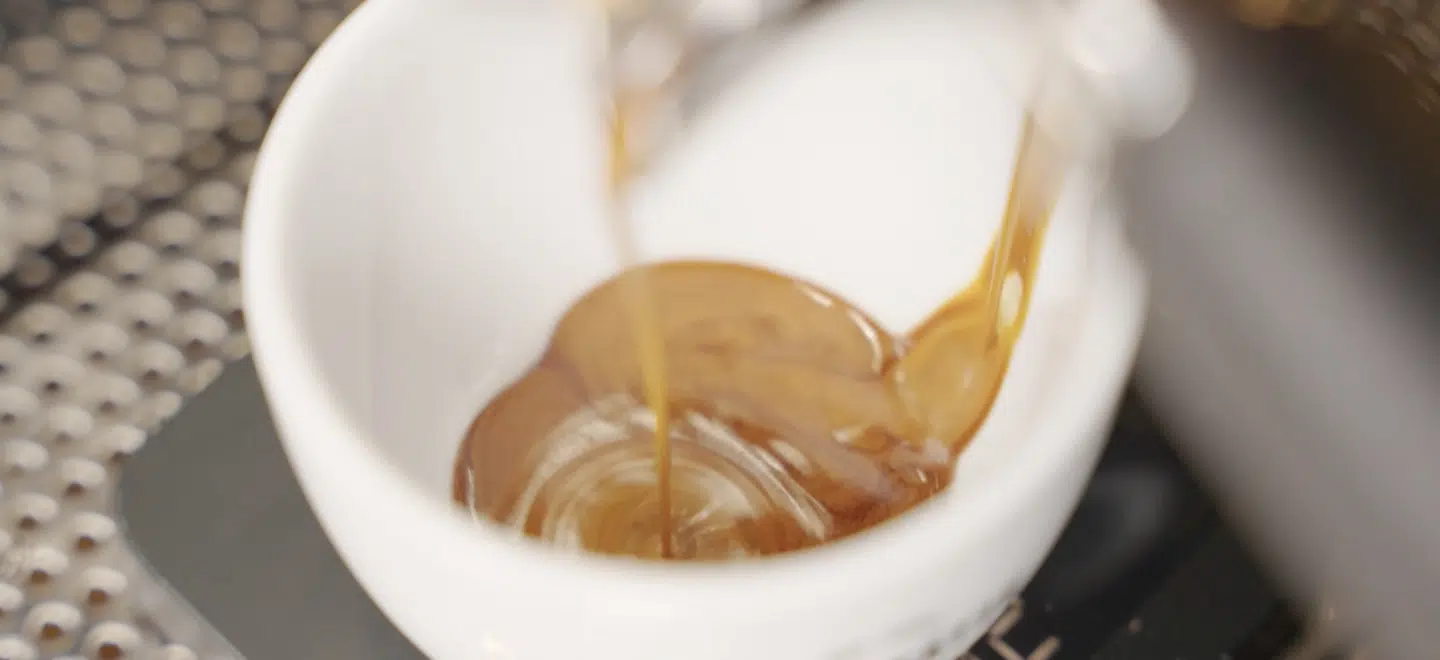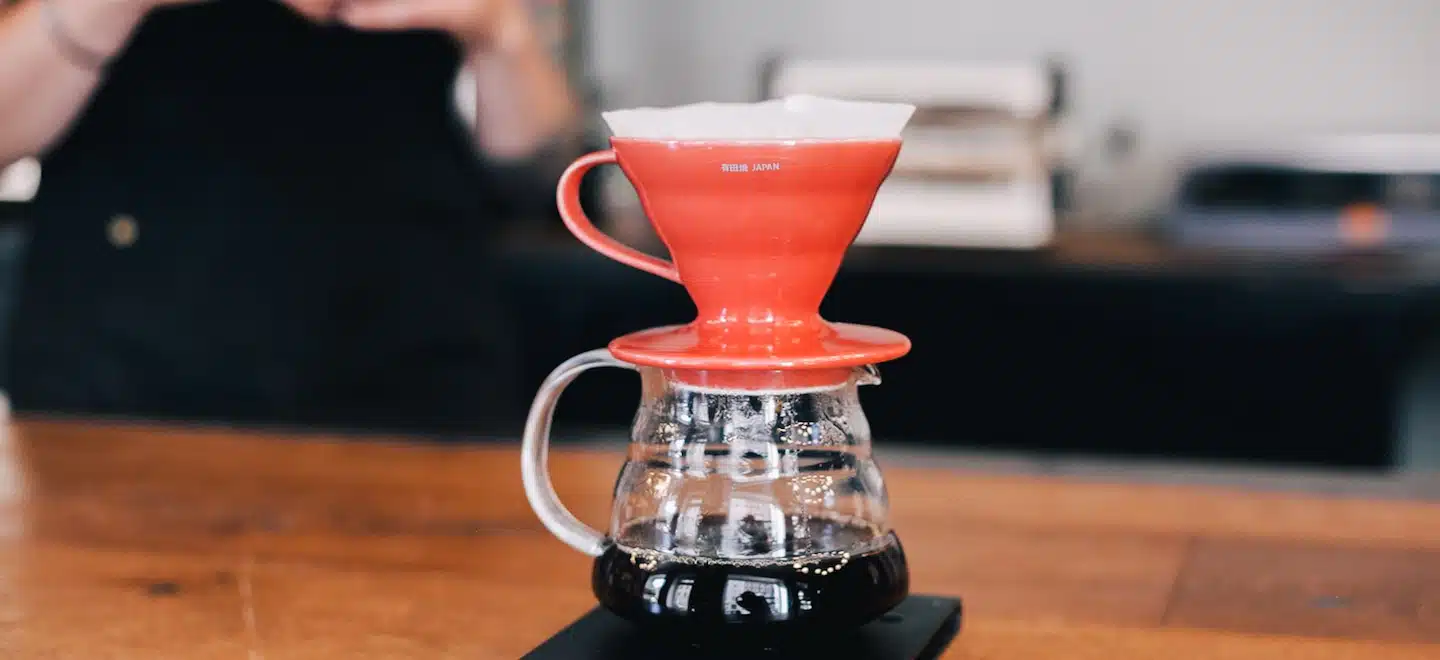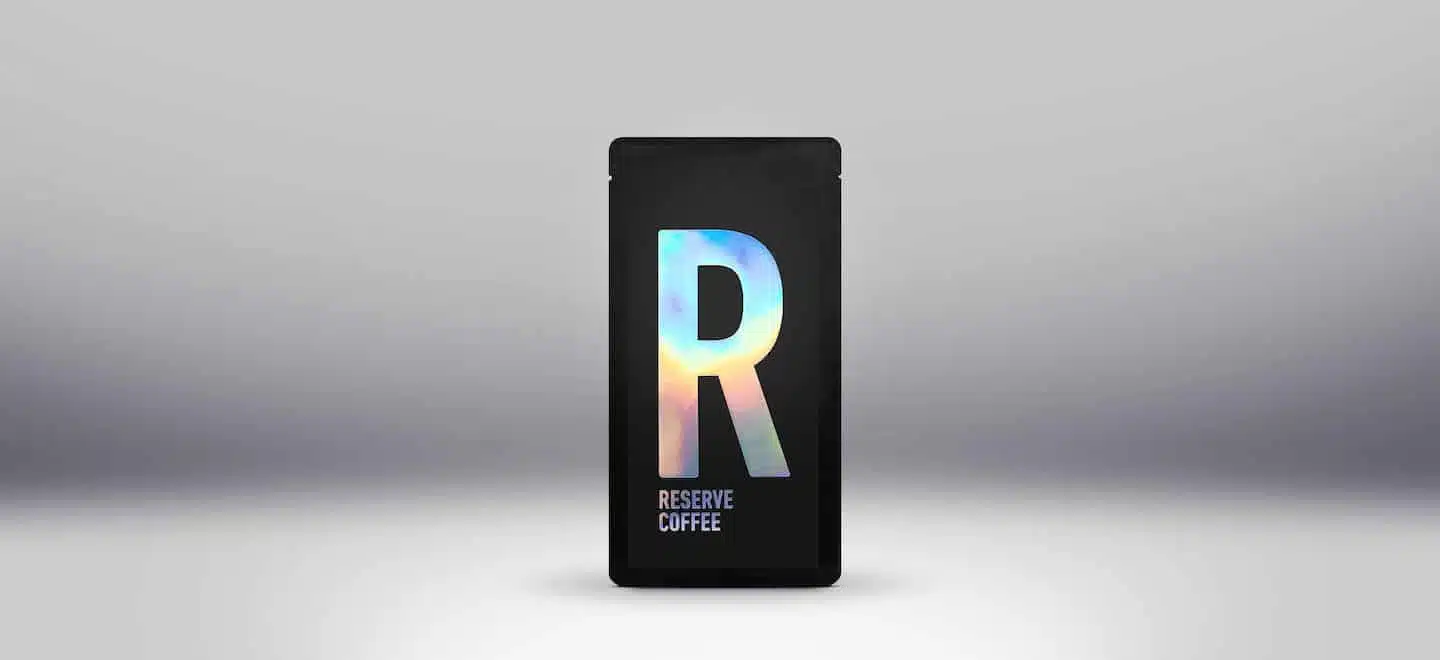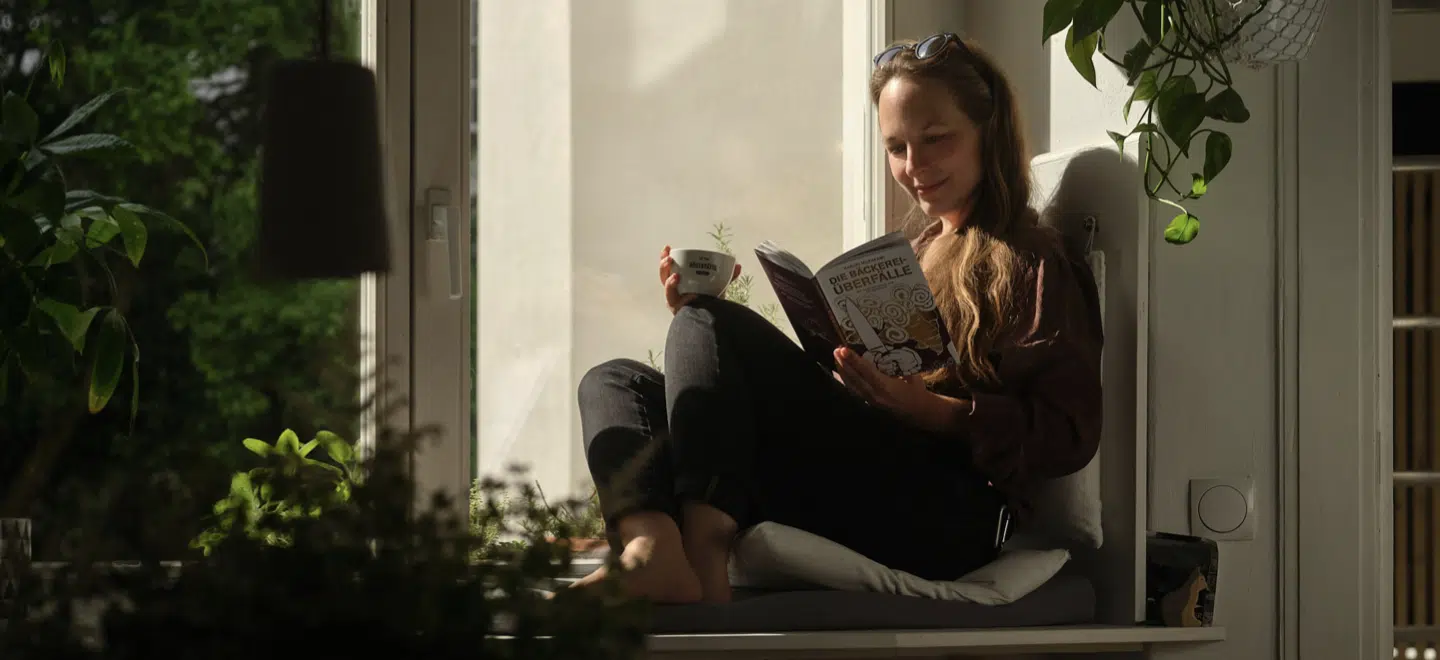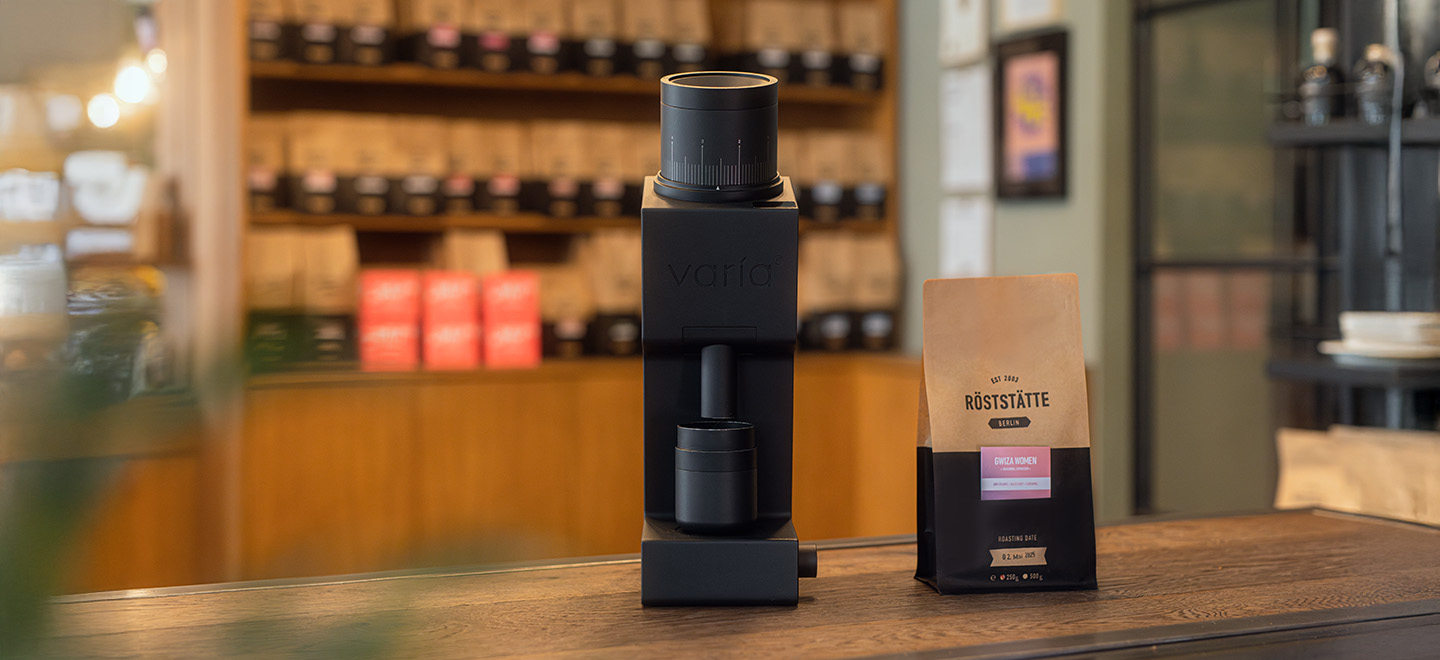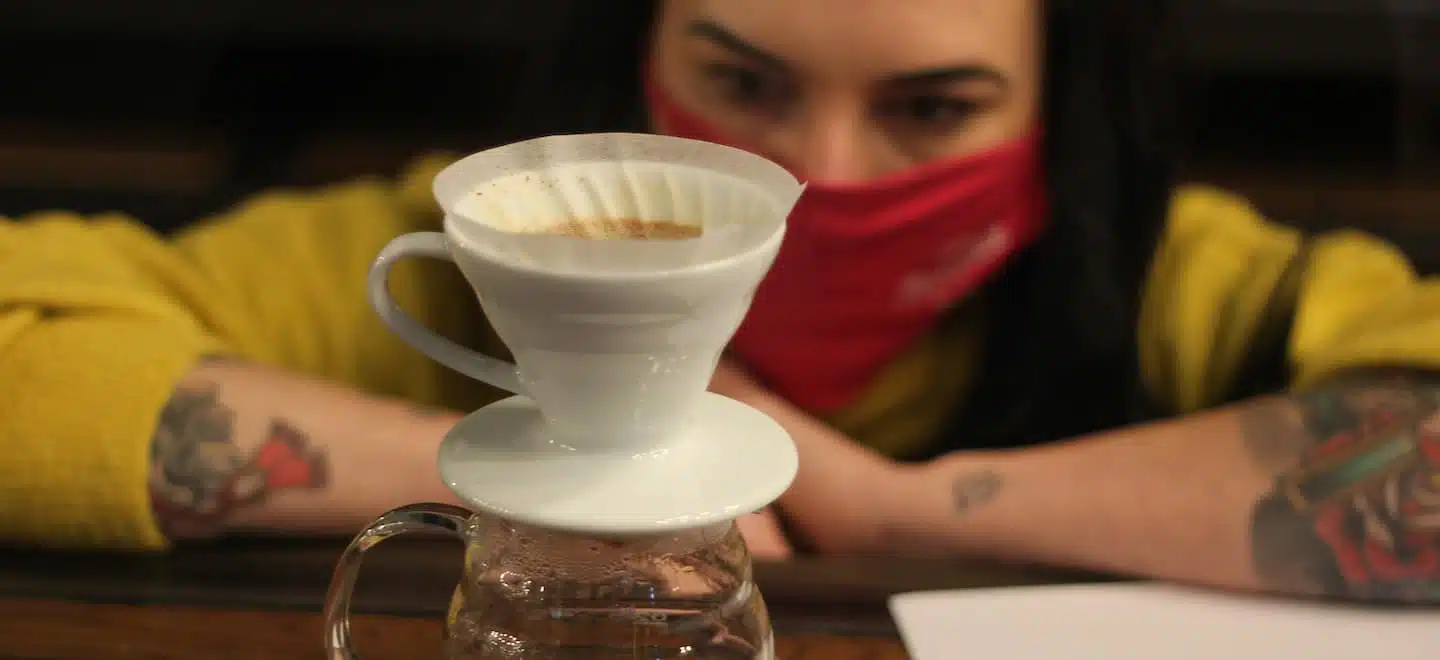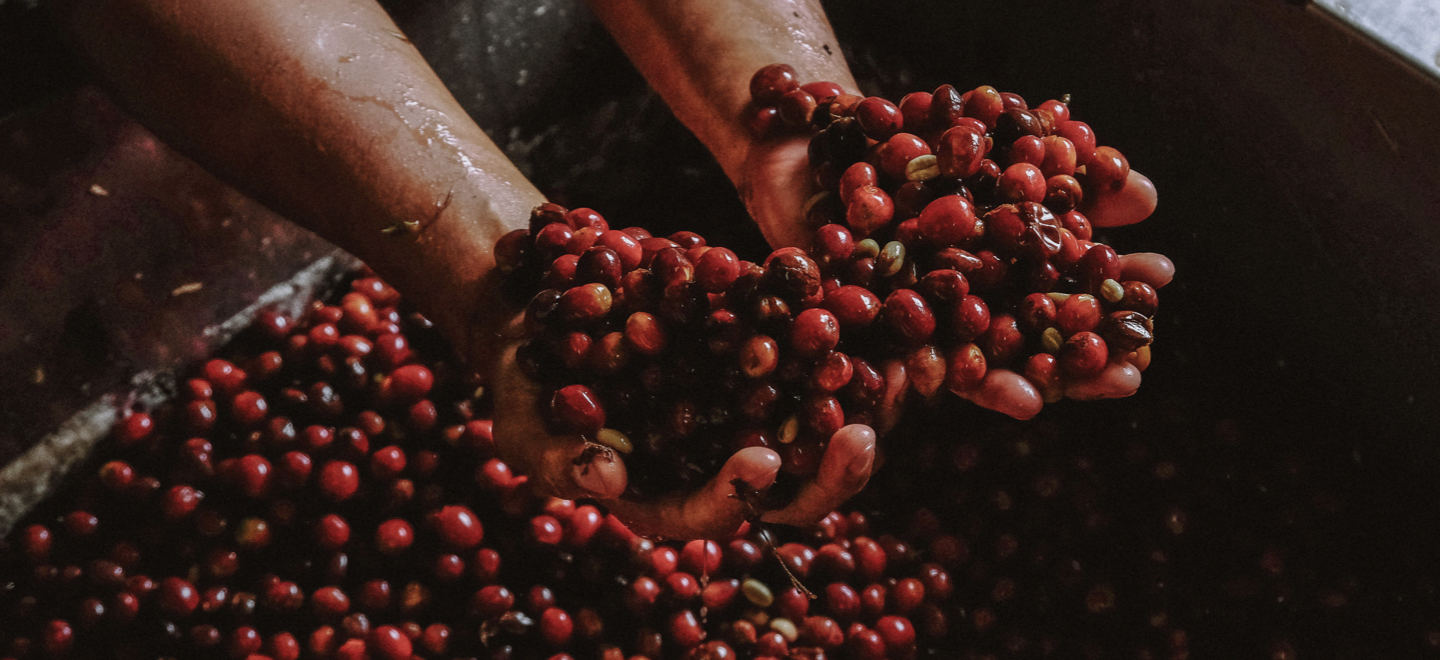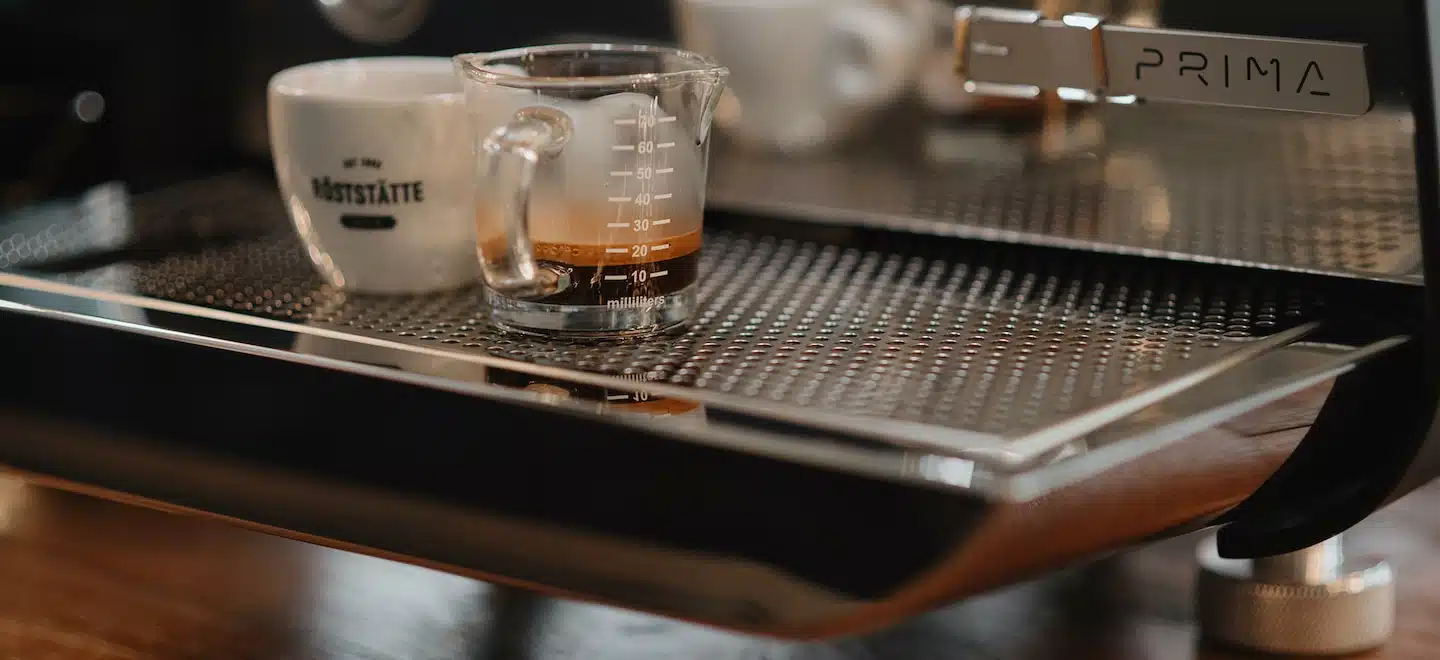Espresso at Home: An essential Guide
All across the world, there is an increasing number of people that are choosing to prepare their coffee at home. From affordable, small and automatic pod machines to expensive, high-tech espresso machines, there’s an ever-growing number of ways to prepare espresso without leaving your house.
As a Barista Trainer, I get in touch with a lot of coffee passionate people that want to improve their home barista experience. Most of the time my students are very frustrated, as they do not seem to be able to get a consistent result and feel like coffee is always a 'hit-and-miss' game.
That is why I want to talk about the basics of how to extract great espresso at home (without getting frustrated). In the following, I provide a quick guide to how to set up your 'coffee corner' at home, covering what I believe are some essential items and knowledge to get your home brewing to cafe standard.
That is why I want to talk about the basics of how to extract great espresso at home (without getting frustrated). In the following, I provide a quick guide to how to set up your 'coffee corner' at home, covering what I believe are some essential items and knowledge to get your home brewing to cafe standard.
Knowing the difference between espresso machines
The decision to buy an espresso machine often comes out of passion, love and the romantic idea that you can serve latte art heart cappuccinos to impress all your friends and loved ones. The market is currently full of a range of espresso machines, starting at 100 Euros up to 6000.
Before you go out and spend all of your savings, it’s important to know the difference between the two main types of espresso machines: the single circuit system and the dual circuit system.
Before you go out and spend all of your savings, it’s important to know the difference between the two main types of espresso machines: the single circuit system and the dual circuit system.
If you are a strong believer in espresso, black, no milk and no latte art needed, then you will be fine with a single circuit system machine. These machines are usually cheaper as they have only one boiler that heats up the water. You can set this boiler, which is usually quite small (about 300 ml) to two different temperatures. Either around 94 degrees for your espresso extraction, or if you have a guest that insists on milk foam, you can set the boiler to just over 100 degrees to make some steam.
This temperature change will take a couple of minutes and will only produce a very limited amount of steam. Another downfall for the latte lovers is that the pressure of the steam is quite minimal and might dilute the milk. However, if you are interested in making a solid espresso, this machine will be perfect for you.
This temperature change will take a couple of minutes and will only produce a very limited amount of steam. Another downfall for the latte lovers is that the pressure of the steam is quite minimal and might dilute the milk. However, if you are interested in making a solid espresso, this machine will be perfect for you.
On the other hand, the dual circuit system machines have a steam and hot water boiler, as well as an additional heat exchanger (or in some cases, two boilers). The water that you will need for making espresso will only come through the heat exchanger and will be heated to 93/94 degrees.
The boiler is much bigger that the one in the single circuit machine (usually more than 1 litre), and is able to constantly produce steam. You will have a separate manometer for your steam pressure that shows 1.2 bar for your steam and 9/10 bar for the group head. With this machine you can simultaneously pull espresso shots and steam milk, which is perfect if you want to create some beautiful milk beverages. We sell some two-circuit models from ECM, like Technika V or Mechanika V Slim and have exhibited them in our showroom in Berlin Mitte.
The boiler is much bigger that the one in the single circuit machine (usually more than 1 litre), and is able to constantly produce steam. You will have a separate manometer for your steam pressure that shows 1.2 bar for your steam and 9/10 bar for the group head. With this machine you can simultaneously pull espresso shots and steam milk, which is perfect if you want to create some beautiful milk beverages. We sell some two-circuit models from ECM, like Technika V or Mechanika V Slim and have exhibited them in our showroom in Berlin Mitte.
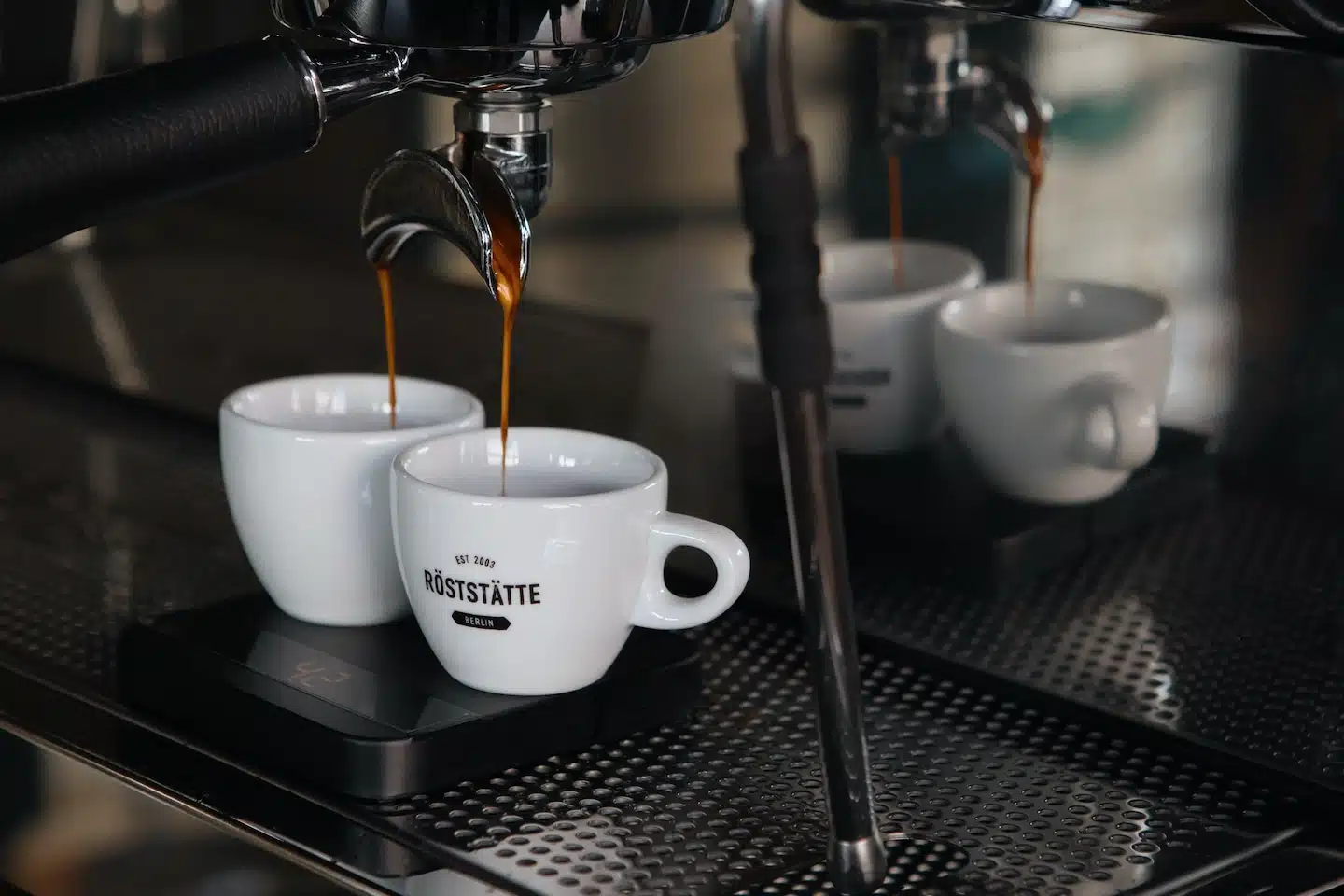
What should I pay for my home machine?
Unfortunately, owning an espresso machine can be a pricey hobby. I would recommend machines above 1300 €, as they are just built better (in my experience) and the price tag reflects the quality.
This doesn’t mean that you need to buy the most expensive machine available. Remember, you also need to calculate other purchases, such as a espresso grinder and extra equipment like a tamper, a tamping mat, a knockbox, barista cloths and milk jugs.
When shopping around for a machine, I would recommend checking the materials used in the machine. What material is the boiler made of? Anything with aluminium is much cheaper, but also a no go because it corrodes and can be harmful to your health. I would go for stainless steel boilers as they are durable and high performing - but of course, they’re also more expensive.
This doesn’t mean that you need to buy the most expensive machine available. Remember, you also need to calculate other purchases, such as a espresso grinder and extra equipment like a tamper, a tamping mat, a knockbox, barista cloths and milk jugs.
When shopping around for a machine, I would recommend checking the materials used in the machine. What material is the boiler made of? Anything with aluminium is much cheaper, but also a no go because it corrodes and can be harmful to your health. I would go for stainless steel boilers as they are durable and high performing - but of course, they’re also more expensive.
Urban Myth
You can NOT decalcify your two circuit system Machine! If you add decalcifier to your water tank, the machine will suck this water into the boiler that always has a level of water in it. That means you now will always have decalcifier in your hot water boiler and that is probably quite toxic. These machines can only be decalcified by a proper technician with an ultrasonic bath.
You should bring your machine for a small maintenance to a workshop once per year, and every 5 years it needs a big service.
In any way, you have to use filtered water.
I suggest a filtering system like the ones BWT are offering, otherwise some people use bottled water but that is just wildly unsustainable.
You should bring your machine for a small maintenance to a workshop once per year, and every 5 years it needs a big service.
In any way, you have to use filtered water.
I suggest a filtering system like the ones BWT are offering, otherwise some people use bottled water but that is just wildly unsustainable.
Should I buy a grinder with my espresso machine?
Absolutely yes!
Coffee reacts very aggressively with oxygen. When we grind coffee, we produce billions of little particles that then react with the surrounding air. This happens so fast, that you will measurably lose aroma and flavour after the first 3 minutes after grinding. Your coffee will taste stale and will not reveal its full potential.
Coffee reacts very aggressively with oxygen. When we grind coffee, we produce billions of little particles that then react with the surrounding air. This happens so fast, that you will measurably lose aroma and flavour after the first 3 minutes after grinding. Your coffee will taste stale and will not reveal its full potential.
What grinder should I buy?
There are so many grinders on the market, it’s hard to say in one word. So let’s talk about the types of grinders first. We have conical burr grinders, flat burr grinders or blade grinders.
Blade grinders are more like blenders, they crush the coffee and create a quite inconsistent particle size. This is absolutely ok if you want to make filter coffee, but for espresso we definitely need a very fine and even particle size.
Blade grinders are more like blenders, they crush the coffee and create a quite inconsistent particle size. This is absolutely ok if you want to make filter coffee, but for espresso we definitely need a very fine and even particle size.
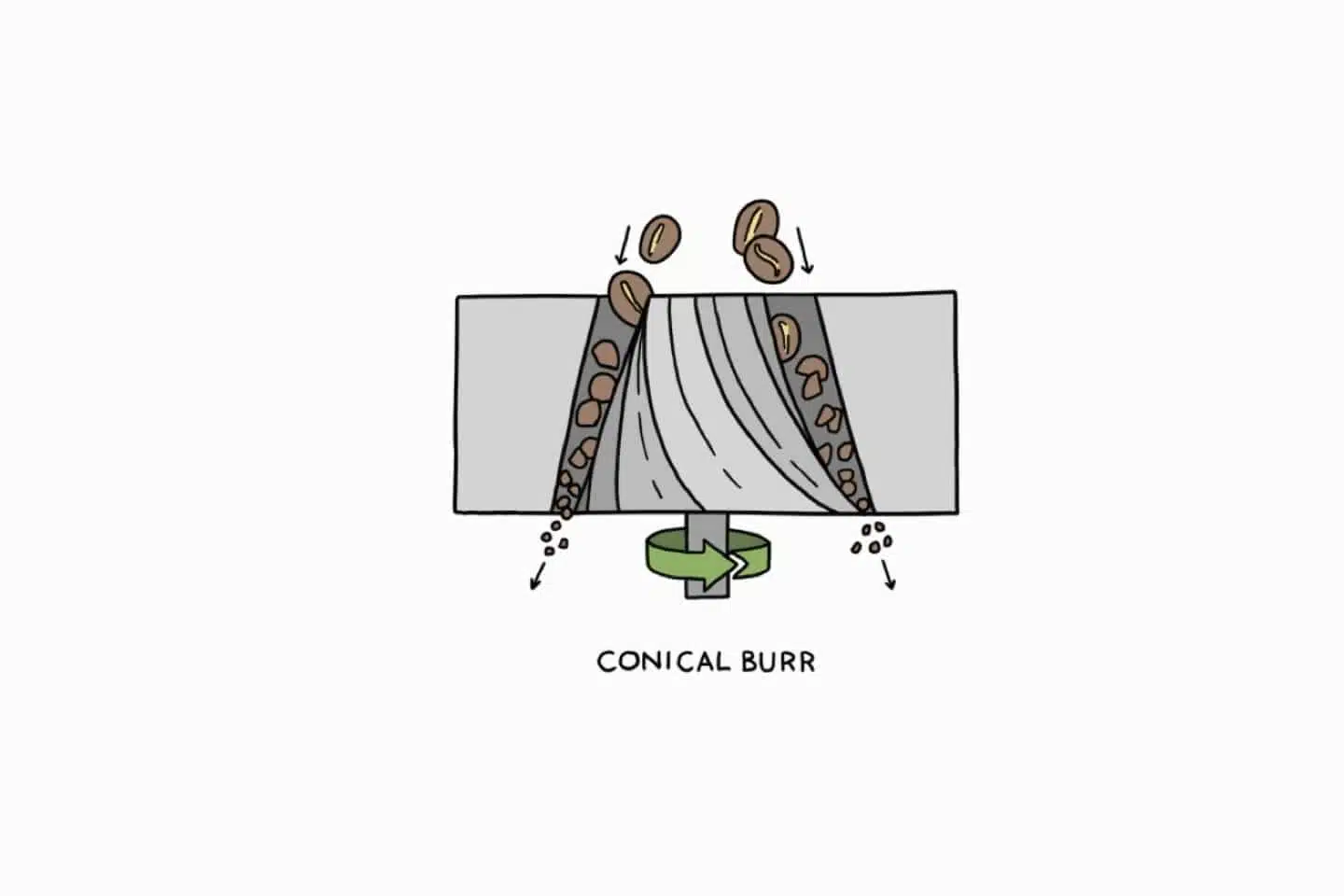
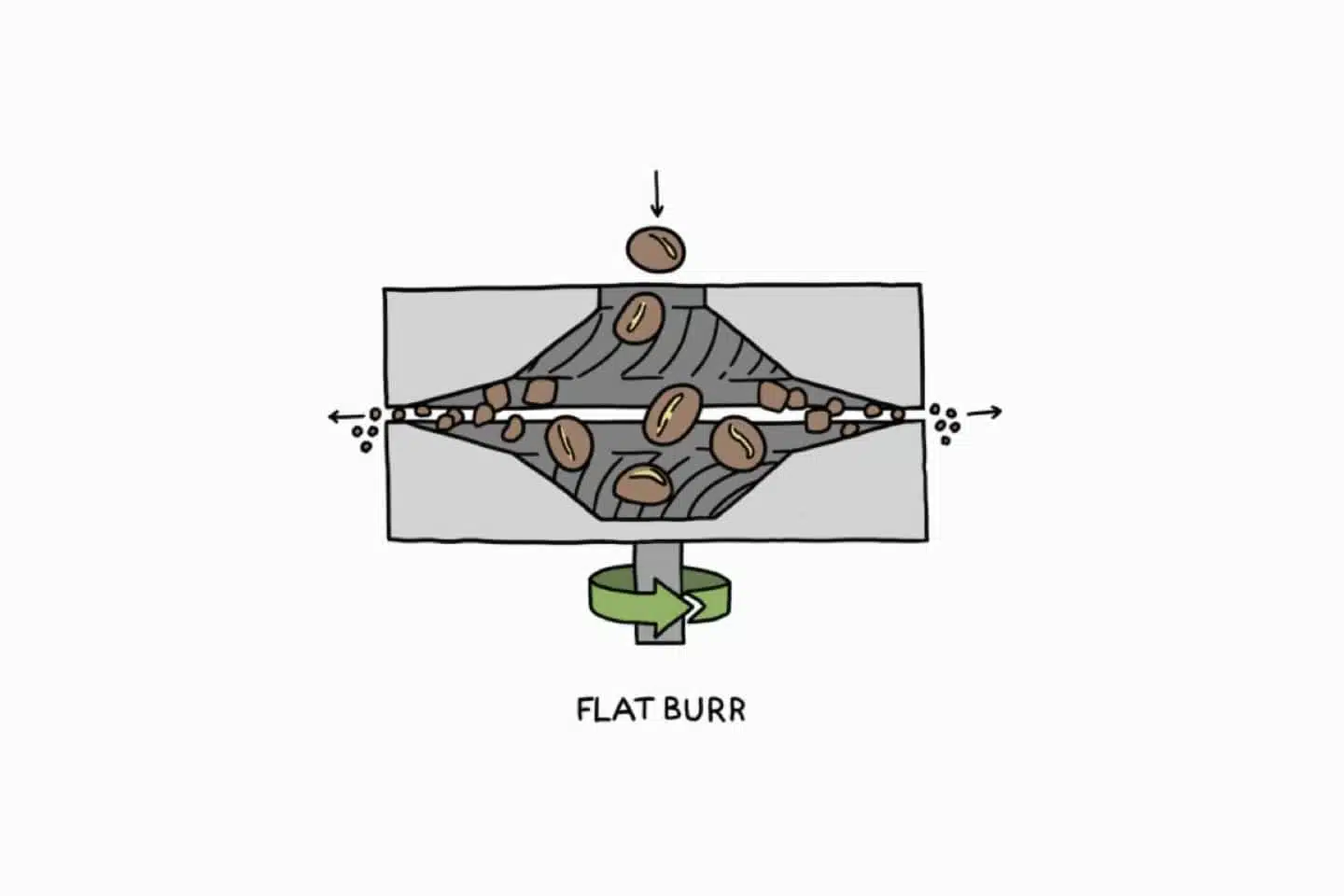
Conical burr grinders often work with smaller rotation values than disc grinders, but are not quite as uniform in terms of the grinding result.
In grinders with a conical grinder, the coffee beans are crushed between the inner cone and the outer wall. The distance between the cone and the wall becomes smaller and smaller, so that the beans are ground more and more finely. The degree of grinding can be changed via the distance between the cone and the wall. In contrast to a disc grinder, the grist is not carried to the side, but rather falls down - and into a collecting container. For this reason, the speed of a conical grinder is lower and the coffee is ground very gently.
In grinders with a conical grinder, the coffee beans are crushed between the inner cone and the outer wall. The distance between the cone and the wall becomes smaller and smaller, so that the beans are ground more and more finely. The degree of grinding can be changed via the distance between the cone and the wall. In contrast to a disc grinder, the grist is not carried to the side, but rather falls down - and into a collecting container. For this reason, the speed of a conical grinder is lower and the coffee is ground very gently.
Disc grinders / flat burr grinders are the most widely used today. The beans are ground between two inwardly curved grinding discs lying on top of one another. One of the two discs is driven by a motor, the other is stationary. The distance between the two panes is slightly larger on the inside than on the outside. The bean gets between the discs from the inside, is broken up here and then transported further outwards by centrifugal force. Since the grinding discs are closer together on the outside, the bean is ground finer and finer. To adjust the degree of grinding, the distance between the discs is changed. The grinding discs are mostly made of steel or ceramic and are very durable if it is a good coffee grinder.
What material should my grinder be made of?
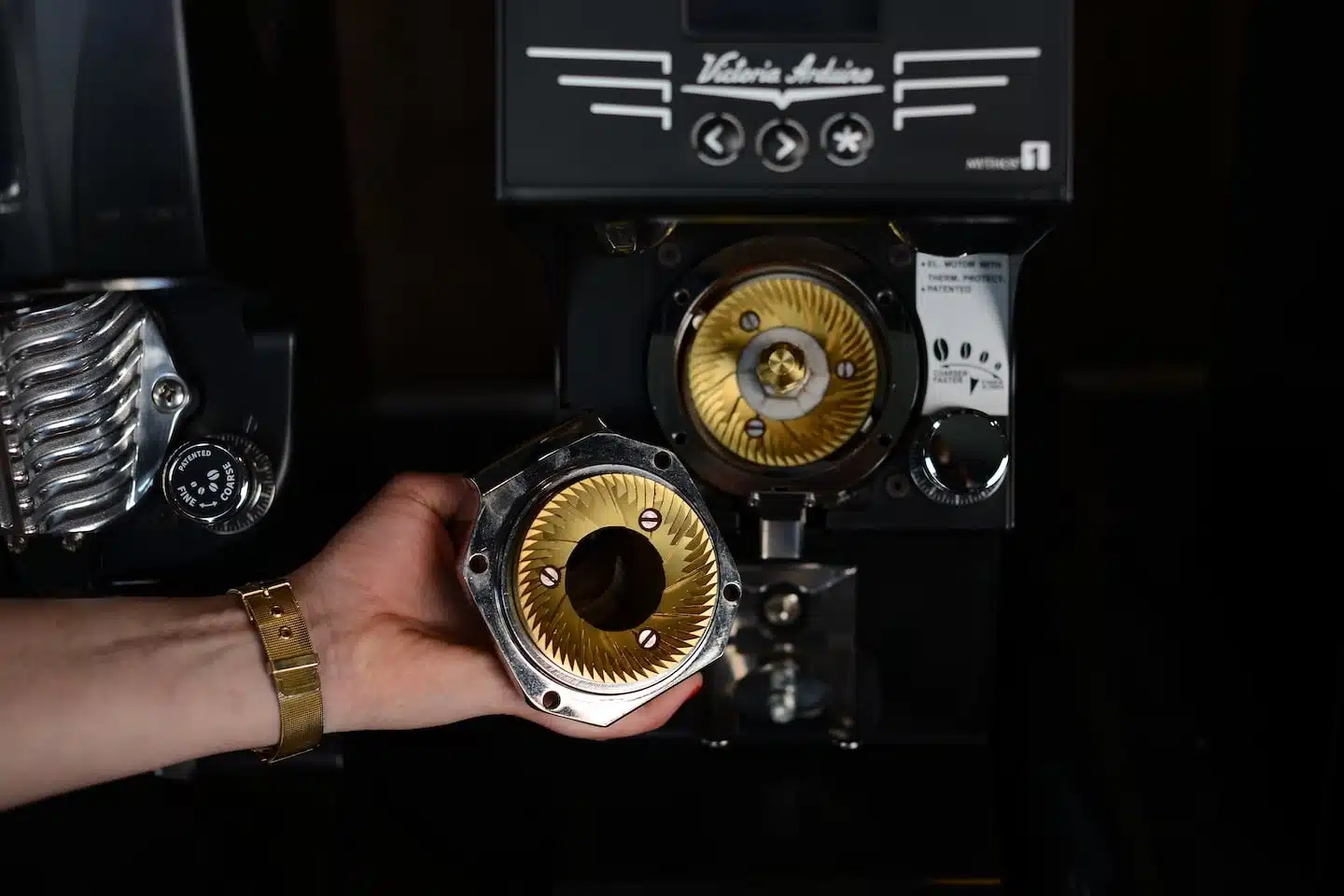
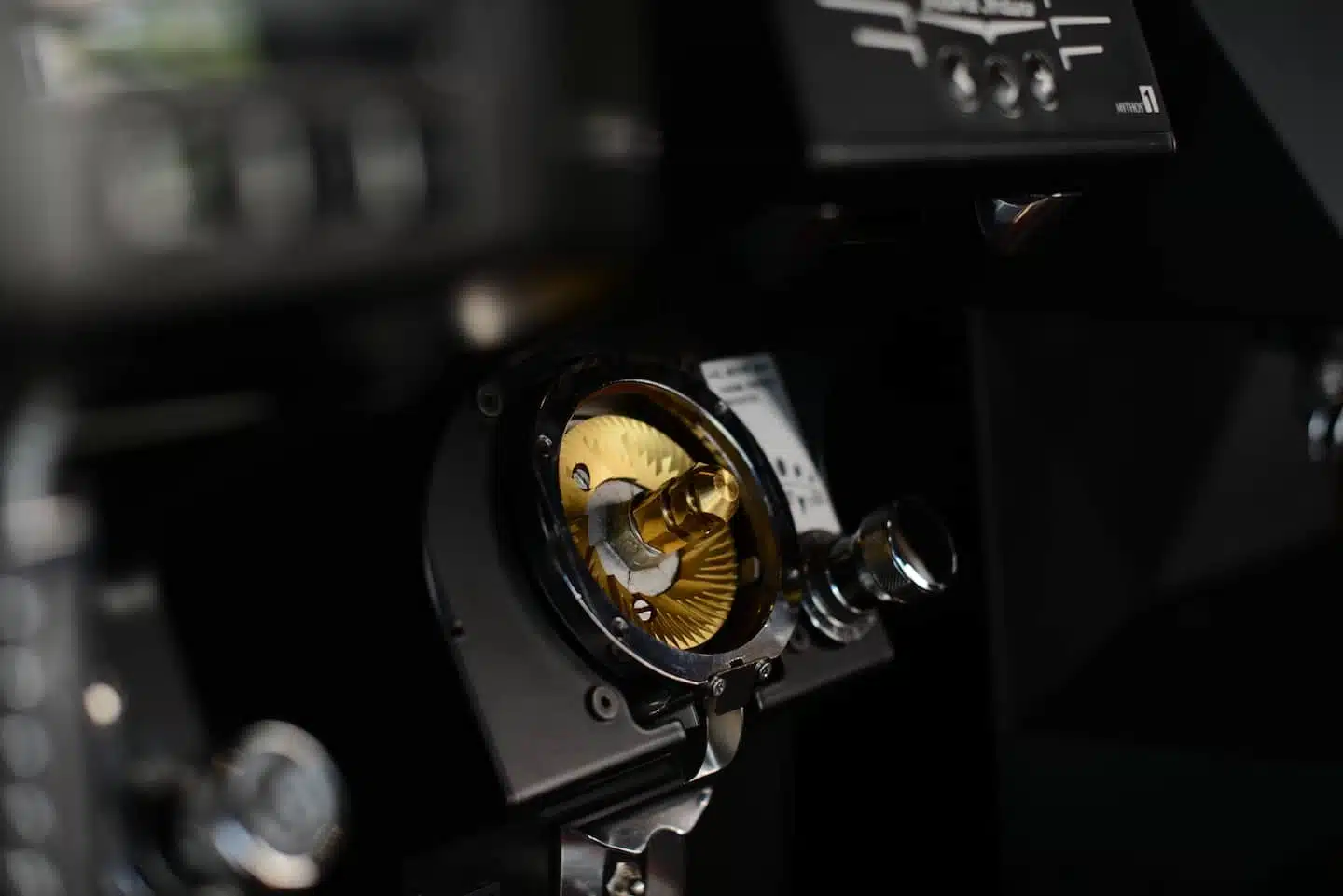
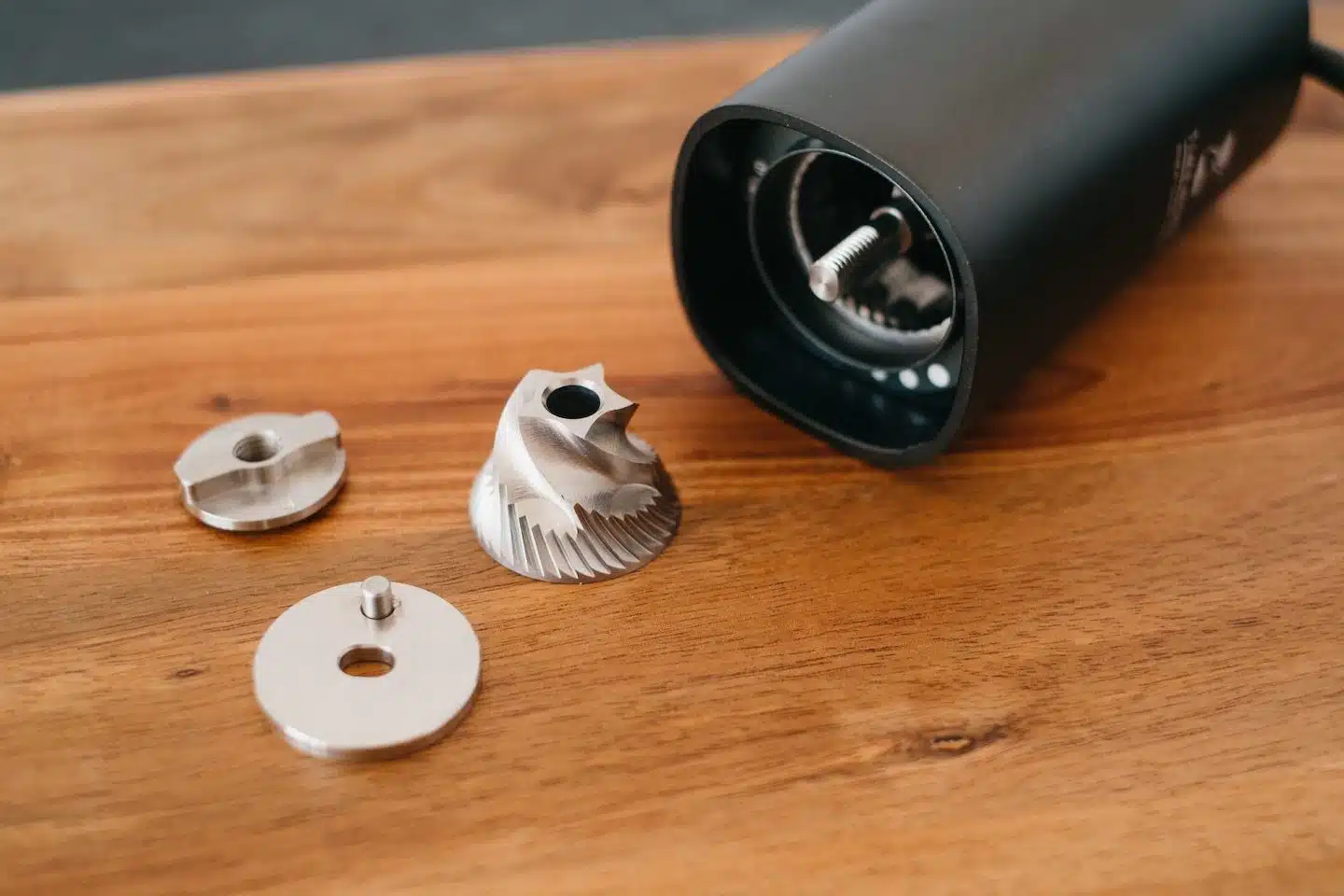
STAINLESS STEEL
Stainless steel is becoming increasingly more popular among coffee fanatics. While some purists swear by ceramic, these blades have a couple important features worth considering. Stainless steel, because it contains chromium, is corrosion resistant. So, these grinders should not rust when you wash them. However, steel does conduct heat and these grinders are slightly more affected by hot environments, shortening their lifespans. Also, these blades will lose their sharpness faster than a ceramic blade. But, stainless steel will start out much sharper than ceramic, giving you more precision in your grinding. This means you can expect more uniformity with these grinders. They also don't typically produce any fines, which can help increase the longevity of your filters. But this also means that your espresso may taste a little different.
With a steel grinder, you are going to get a cup that tastes and feels clean in your mouth. Because of the precision you can expect with a steel blade, you'll be looking forward to coffee that is brewed exactly how you like it regardless of what brewing method you use. That said, steel grinders, both automatic and manual, work especially well with alternative brewing methods such as pour-over and French press. They are also preferred for single-source, non-espresso beans.
That said, steel grinders, both automatic and manual, work especially well with alternative brewing methods such as pour-over and French press. They are also preferred for single-source, non-espresso beans.
With a steel grinder, you are going to get a cup that tastes and feels clean in your mouth. Because of the precision you can expect with a steel blade, you'll be looking forward to coffee that is brewed exactly how you like it regardless of what brewing method you use. That said, steel grinders, both automatic and manual, work especially well with alternative brewing methods such as pour-over and French press. They are also preferred for single-source, non-espresso beans.
That said, steel grinders, both automatic and manual, work especially well with alternative brewing methods such as pour-over and French press. They are also preferred for single-source, non-espresso beans.
CERAMIC
Currently, most domestic burr grinders are made using ceramic instead of steel. There are a couple of reasons for this.
First, their high-strength blades are especially long-lasting. They start off less sharp than a steel blade; however they will retain their original sharpness almost indefinitely. But, ceramic will not stand up so well against bigger impacts. So if it stays on your counter, it'll last you a long time- just don’t drop it or put anything too strange in your grinder. Also, some coffee-connoisseurs like to claim that because ceramic does not conduct heat, you won't have to worry about the temperature affecting the oils in your coffee. However, aside from a few vehement palates, there is little to no evidence to back this up. While heat conduction might be irrelevant, the fact that ceramic does not rust or otherwise deteriorate when exposed to warm environments or moisture can be a considerable plus. These kind of burrs are mainly used in manual grinders.
In my experience a solid espresso grinder doesn't cost less than 400 Euros. There are exceptions of course, for example hand grinders that are very durable but they also cost about 230 Euros and obviously you have to manually grind each dose.
First, their high-strength blades are especially long-lasting. They start off less sharp than a steel blade; however they will retain their original sharpness almost indefinitely. But, ceramic will not stand up so well against bigger impacts. So if it stays on your counter, it'll last you a long time- just don’t drop it or put anything too strange in your grinder. Also, some coffee-connoisseurs like to claim that because ceramic does not conduct heat, you won't have to worry about the temperature affecting the oils in your coffee. However, aside from a few vehement palates, there is little to no evidence to back this up. While heat conduction might be irrelevant, the fact that ceramic does not rust or otherwise deteriorate when exposed to warm environments or moisture can be a considerable plus. These kind of burrs are mainly used in manual grinders.
In my experience a solid espresso grinder doesn't cost less than 400 Euros. There are exceptions of course, for example hand grinders that are very durable but they also cost about 230 Euros and obviously you have to manually grind each dose.
What else do I need?
The most important and most underappreciated item to make coffee is a SCALE! Making coffee means following a recipe. If I am trying to bake bread and just add whatever I feel like, I will most likely not get the same results. It’s going to be wildly inconsistent. It seems like the hardest challenge for me to convince not only home baristas but even baristas that work in cafes to use scales. It is so important I can’t even emphasize it enough.
If you do not weigh your coffee, you will never get the same result twice and you can not dial in your coffee and changing grind size will not make any sense.
Let's use the following recipe as our go to recipe:
18g in the basket
38g out
25 second extraction time
Without a scale I can not check any of this. Because the extraction time depends not just on the grind size but also on the amount of coffee that we use. If I use 18g and my extraction time is only 15 seconds, I will have to change my grind size to a finer grind setting. If my coffee with 18g is running 45 seconds for 38g out, I will have to use a coarser grind setting.
To make life a little bit easier with handling the output weight, I think for at home it is definitely ok to use a shotglas with a mark so you know roughly if it's enough.
If you do not weigh your coffee, you will never get the same result twice and you can not dial in your coffee and changing grind size will not make any sense.
Let's use the following recipe as our go to recipe:
18g in the basket
38g out
25 second extraction time
Without a scale I can not check any of this. Because the extraction time depends not just on the grind size but also on the amount of coffee that we use. If I use 18g and my extraction time is only 15 seconds, I will have to change my grind size to a finer grind setting. If my coffee with 18g is running 45 seconds for 38g out, I will have to use a coarser grind setting.
To make life a little bit easier with handling the output weight, I think for at home it is definitely ok to use a shotglas with a mark so you know roughly if it's enough.
URBAN MYTH
You can not make a full cup of coffee with an espresso machine! Our espresso has a set recipe. Letting more water pass the basket until the cup is full will only extract bitterness! Your coffee will taste bitter and washed out. What you should do is: prepare a cup, fill it up with hot water out of the hot water output on your machine and let your espresso run on this water. We call this AMERICANO if using a single shot of espresso or long black if using a double shot.
But what is very important to know: there is NO SUCH THING as a beverage called CAFE CREMA! This is simply an invention for full automatic machines and does not work for espresso machines.
But what is very important to know: there is NO SUCH THING as a beverage called CAFE CREMA! This is simply an invention for full automatic machines and does not work for espresso machines.
Additional equipment
I recommend a Tamper that fits perfectly into your basket. The machines all have different diameters but are easy to find out online.
A tampermatt will help you to keep your kitchen bench protected.
Microfiber cloths are a perfect and sustainable solution to keep your machine and portafilter clean and can be washed at 90 degrees, perfect to get rid of any milk germs. They are also a good tool to clean the portafilter instead of using a brush as the cloth cleans the basket and dries it at the same time.
A knock box should be appropriate for the amount of coffee waste that you will be producing, to save space, I recommend a draw that fits underneath the grinder. This way you can also just swipe the coffee that might have sprayed into the draw with a…
Grinder brush. This tool helps you to keep your grinding area clean.
If you are into Milk and Latte art, there are so many different companies nowadays that specialize in making the best latte art jug. Just keep in mind, you are making the patterns, not the jug.
Once you have all your equipment sorted, and you weigh your coffee, you will get way more consistent results.
If you want to know more about how to store your coffee, check out my article about aging coffee and if you want to know more about dialling in, read my article “how to dial in coffee”
I hope you found this helpful and if you have any questions or suggestions, please do not hesitate to message me via the contact form.
A tampermatt will help you to keep your kitchen bench protected.
Microfiber cloths are a perfect and sustainable solution to keep your machine and portafilter clean and can be washed at 90 degrees, perfect to get rid of any milk germs. They are also a good tool to clean the portafilter instead of using a brush as the cloth cleans the basket and dries it at the same time.
A knock box should be appropriate for the amount of coffee waste that you will be producing, to save space, I recommend a draw that fits underneath the grinder. This way you can also just swipe the coffee that might have sprayed into the draw with a…
Grinder brush. This tool helps you to keep your grinding area clean.
If you are into Milk and Latte art, there are so many different companies nowadays that specialize in making the best latte art jug. Just keep in mind, you are making the patterns, not the jug.
Once you have all your equipment sorted, and you weigh your coffee, you will get way more consistent results.
If you want to know more about how to store your coffee, check out my article about aging coffee and if you want to know more about dialling in, read my article “how to dial in coffee”
I hope you found this helpful and if you have any questions or suggestions, please do not hesitate to message me via the contact form.
Zurück zur Übersicht


Wir schenken Dir 5€
auf Deine nächste
Kaffee Bestellung!
Erhalte Zugang zu Rabatten exklusiv für unsere Newsletter Community. Mit der Anmeldung erklärst Du dich einverstanden, E-Mail Marketing zu erhalten. Datenschutz
Check Dein Postfach!
Und hol dir deinen 5€ Bonus ab.
